Where to dig in?
You’ll want the best gardening shoes for women that combine waterproof materials like rubber or neoprene with supportive features for comfort during extended work. Look for memory foam insoles, slip-resistant treads, and either ankle-height boots for muddy conditions or breathable clogs for dry weather tasks. Bogs Patch Ankle Boots offer excellent support and style, while quality garden clogs provide quick on-off convenience. Choose sealed seams and deep-tread outsoles for wet terrain, plus cushioned insoles to reduce foot fatigue and maintain proper alignment throughout your gardening sessions.
Top-Rated Women’s Gardening Footwear Options
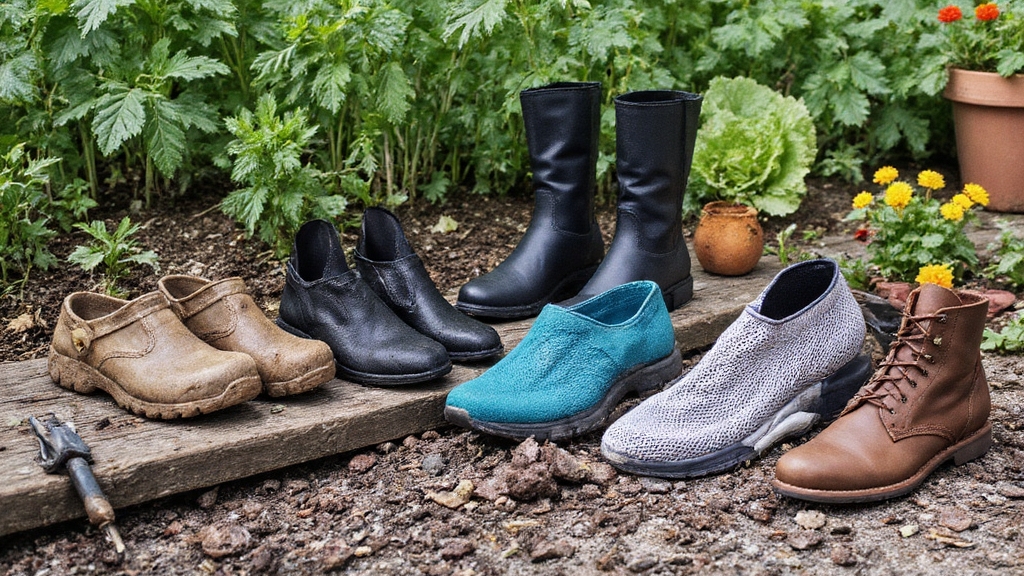
Finding the right gardening shoes can transform your outdoor experience from uncomfortable to enjoyable, especially when you’re spending hours tending to your plants. Top-rated options like Bogs Patch Ankle Boots consistently deliver exceptional performance, showing no wear after six months of regular outdoor use. These boots feature contoured, supportive insoles that reduce foot fatigue during long sessions, while their ankle-height design provides stability and easy on-off convenience. In fact, Bogs Patch Ankle Garden Boots are known for their stylish design and perfect scores in durability tests, making them a top choice for gardeners.
Memory foam insoles in quality garden clogs offer a soft step-in experience, making daily garden tasks more comfortable. Hisea boots maintain their comfort and structural integrity even in muddy, wet conditions. Flexible soles improve your maneuverability across various garden terrains compared to heavier alternatives. Most leading brands offer women’s sizes from 6 to 11, with adjustable features accommodating different foot shapes for ideal fit. Popular styles include neoprene slip-ons that provide excellent flexibility and quick-drying properties for wet garden conditions.
Waterproof Materials and Construction Features
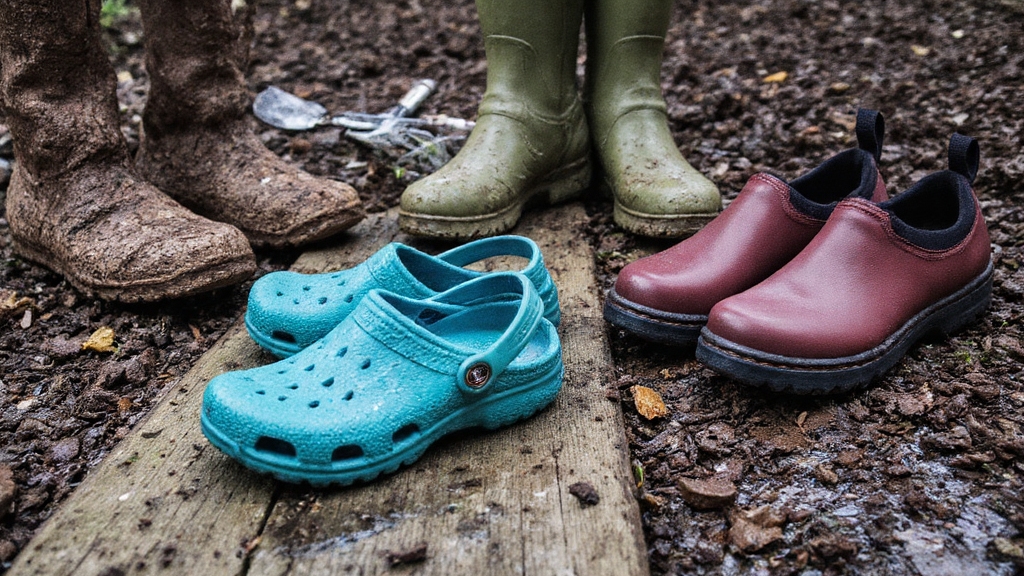
Three key waterproof materials dominate the gardening shoe market, and each offers distinct advantages for keeping your feet dry during outdoor work. Rubber stands as the gold standard because it naturally repels water and reduces blister formation. Neoprene, often mixed with latex, provides flexibility while insulating your feet in cold conditions. Molded resin and polyurethane materials offer better breathability than traditional options, which helps when you’re not wearing socks. Waterproof options like those from The Original Muck Boot Company also prioritize traction, making them ideal for heavy-duty gardening tasks.
Construction features matter just as much as materials. Look for sealed seams that prevent water from sneaking through stitching points. Slip-on designs with heel kicks let you remove shoes easily without touching muddy surfaces. Deep-tread rubber outsoles provide essential traction on wet ground, while gusseted tongues block water entry near your ankles. Many gardening shoes feature cushioned insoles that provide all-day comfort during extended outdoor work sessions.
Comfort and Support for Extended Garden Work
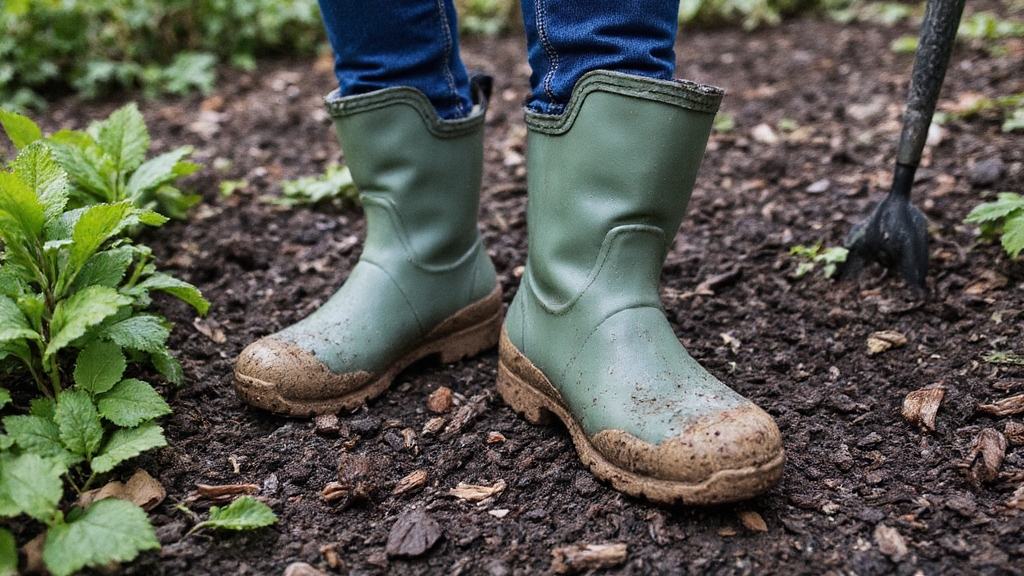
Extended garden sessions can take a serious toll on your feet, but the right shoes transform hours of digging, planting, and weeding into comfortable work.
Essential Comfort Features
Look for cushioned insoles that reduce foot pain during prolonged activities. Breathable uppers maintain comfortable foot environments, while extra heel cushioning absorbs shock when you’re kneeling on hard surfaces. Quality arch support prevents foot fatigue and maintains natural alignment. Consider options with touchscreen-compatible materials for added functionality.
Support Elements for All-Day Wear
Superior arch support distributes weight evenly, reducing strain on your feet and calves. Shock-absorbing midsoles protect joints from repeated impact. Firm heel counters stabilize your foot and prevent excessive motion that causes injury. Built-in heel kicks allow for hands-free removal when transitioning from garden to indoor spaces.
Materials That Matter
Ultra-soft rubber uppers conform to your foot shape, eliminating pressure areas. EVA foam footbeds provide eco-friendly cushioning, while natural treatments fight odor for enhanced wearability.
Choosing the Right Style for Different Weather Conditions
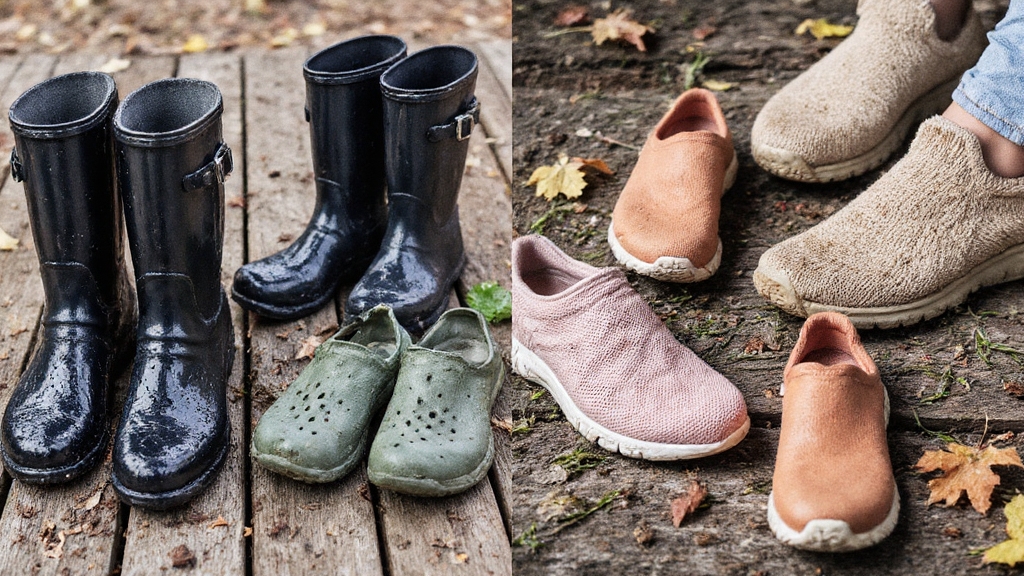
Weather conditions dictate which gardening shoe features you’ll need most, and selecting the wrong style can turn a pleasant gardening session into an uncomfortable struggle. Different seasons and climates require specific shoe characteristics to keep you comfortable and safe. Here’s how to match your gardening shoes to weather conditions:
Choosing the right gardening shoes for your local climate prevents discomfort and ensures safety during outdoor work sessions.
- Wet and Muddy Conditions – Choose 100% waterproof materials like rubber or treated leather with slip-resistant soles and sealed seams.
- Cold Weather – Select insulated shoes with thermal ratings from -40°F to 50°F, featuring neoprene or fleece linings.
- Hot and Humid Weather – Opt for breathable mesh panels, lightweight designs, and moisture-wicking footbeds. Lightweight options are particularly beneficial for extended wear during warm weather gardening sessions.
- Variable Weather – Consider slip-on clogs that offer quick on/off convenience while maintaining waterproof qualities. Additionally, some gardeners find the Feverfew Garden Company Gloves(gardening-gloves-link) useful for their touch screen compatibility and protection, ensuring a comfortable and efficient gardening experience regardless of the shoe choice.
Ankle Coverage vs. Low-Profile Garden Shoes
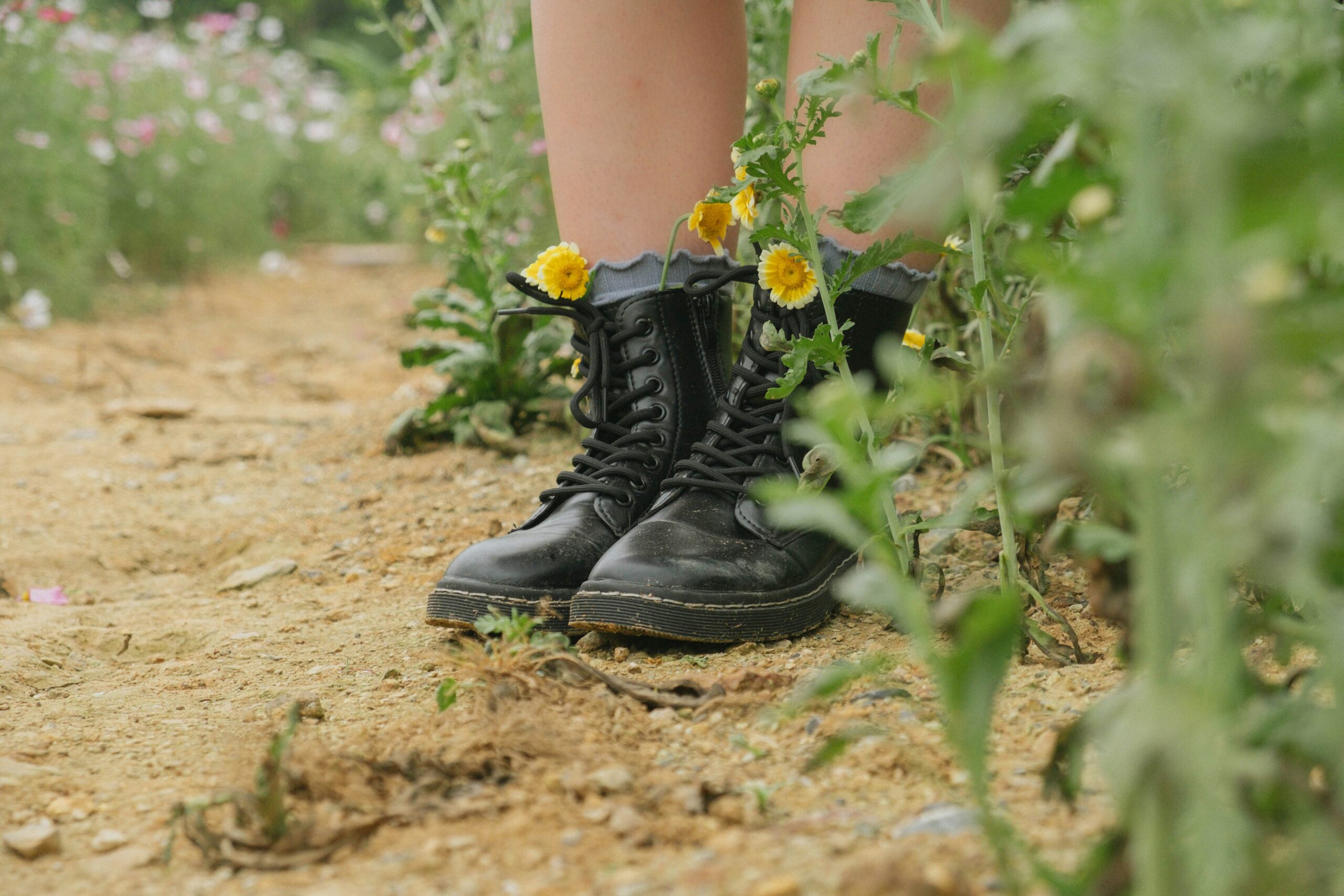
When choosing between ankle-coverage boots and low-profile clogs, you’ll need to balance protection against convenience based on your specific gardening activities.
Protection Levels
Ankle boots shield your feet from mud, water, and sharp objects while preventing soil from entering your shoes during ground-level work. Low-profile clogs cover only up to your instep, leaving ankles exposed to environmental elements. Considering the durability and performance of top garden hose brands, similar durability in footwear can ensure long-lasting protection.
Convenience Factors
Clogs slip on and off rapidly, making them ideal for light gardening tasks and frequent shifts. Ankle boots take longer to wear but provide secure, extensive protection. A secure fit is important to prevent foot fatigue and injury while working in awkward gardening positions.
Weather Considerations
Choose ankle boots for wet conditions since they offer superior waterproofing. Clogs work better in dry, warm weather because they’re more breathable and lightweight, though water can enter from the back opening.
Breathability and Temperature Considerations
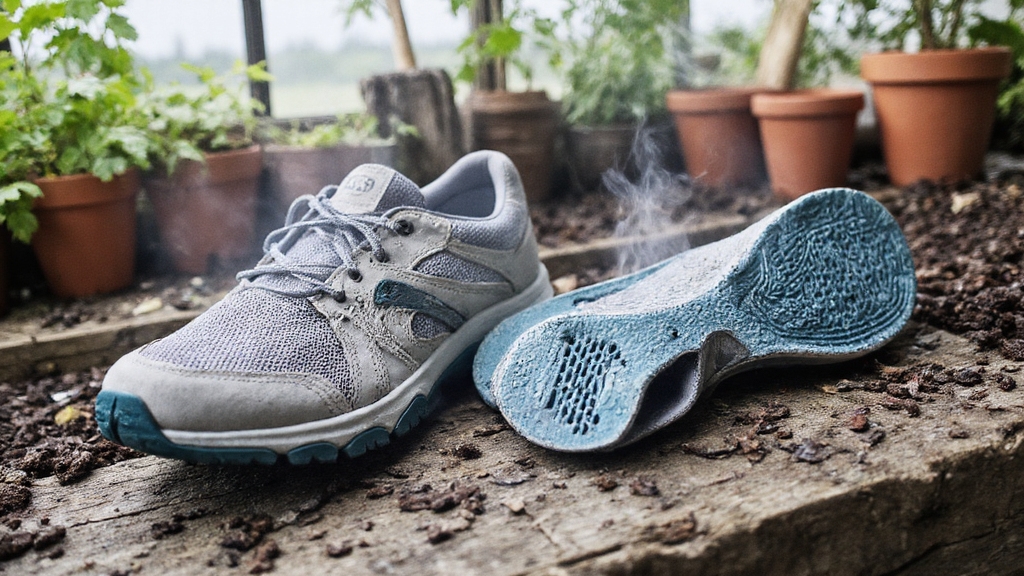
Your feet will thank you for choosing garden shoes that manage moisture and temperature effectively, especially during longer outdoor sessions. Materials like molded resin and polyurethane offer superior breathability compared to traditional rubber, while still maintaining waterproof protection. Look for shoes with ventilation holes in the uppers, which promote continuous airflow and prevent moisture buildup that leads to discomfort and odor.
While considering your gardening footwear, think about how indoor plants can also improve your home environment with their air-purifying qualities.
Quality gardening shoes prevent the foot fatigue that comes from inadequate support during extended periods of planting, weeding, and harvesting.
Temperature-regulating features to prioritize include:
- WIXIT Cool-Clad™ airmesh lining with micro-dot perforations for enhanced moisture wicking
- Breathable waterproof materials that adapt to seasonal temperature changes
- Moisture-wicking interior linings that absorb sweat and allow quick evaporation
- Ventilated upper fabrics with micro-perforations for continuous air circulation
These technologies work together to keep your feet comfortable across different weather conditions while reducing fungal infection risks.
Slip-Resistant Soles for Muddy Terrain
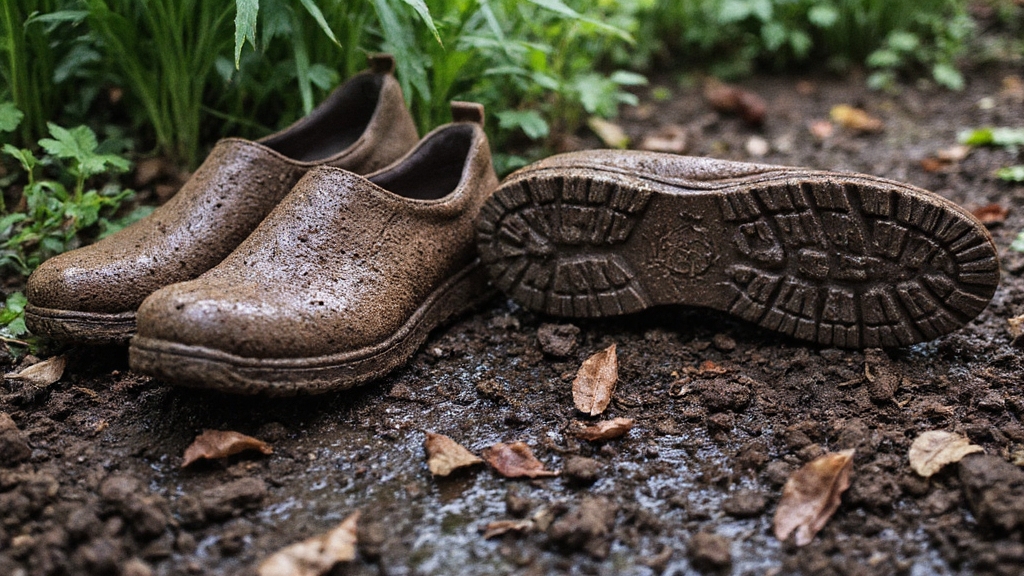
Nothing threatens your gardening confidence quite like losing your footing on slippery, muddy terrain. You’ll want gardening shoes with specialized rubber compounds that increase traction in wet conditions, preventing dangerous slips and falls.
Look for deep treads and lug patterns that grip uneven surfaces effectively. The best soles feature multi-directional designs, allowing stability during lateral and forward movement on slick ground. Choose vulcanized rubber materials that maintain slip resistance after repeated moisture exposure. Some high-quality gardening tools emphasize ergonomics and durability, much like well-designed gardening shoes.
Wider soles provide better balance than narrow designs in muddy conditions. You’ll need lug depths of at least a few millimeters for effective mud traction, allowing debris to discharge rather than clog the tread. Sharp, angled sole edges “bite” into slippery soil, while heel brakes prevent backward sliding on slopes. Quality gardening footwear should be 100% waterproof to ensure your feet stay dry during extended outdoor work sessions.
Easy-Care and Maintenance Requirements
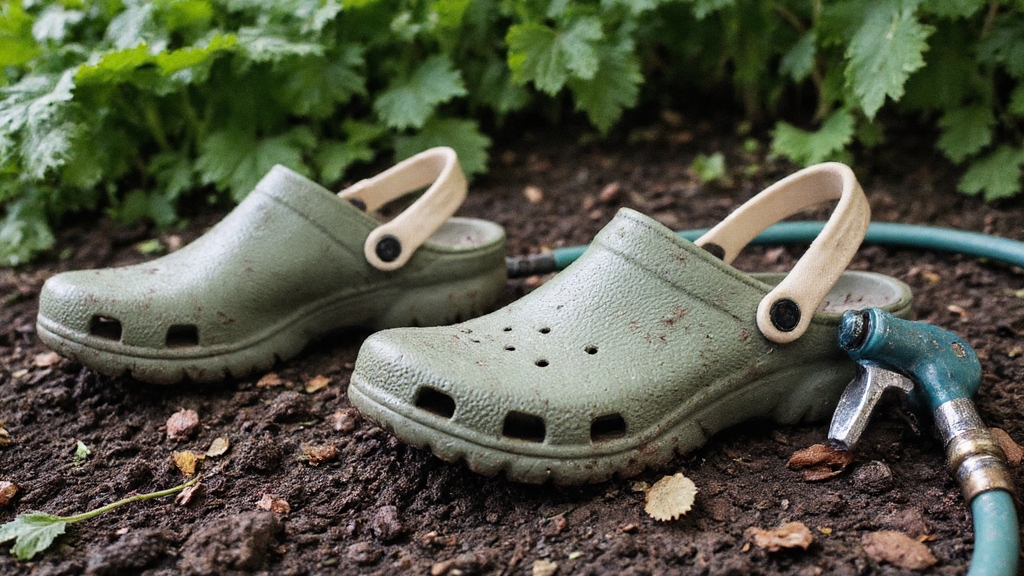
High-quality slip-resistant soles won’t maintain their grip without proper care, making regular maintenance a key factor in your gardening shoe investment. Fortunately, most women’s gardening shoes feature easy-care designs that simplify upkeep.
Your maintenance routine should include these essential steps:
- Rinse thoroughly after each use with clean water to remove soil and debris from soles and grooves
- Air dry at room temperature in well-ventilated areas, avoiding direct sunlight that damages rubber materials
- Remove insoles when possible to hand-wash separately with mild detergent, preventing odor buildup
- Apply care products specific to your shoe material annually to maintain flexibility and waterproofing
The durability of gardening shoes can be compared to reliable weeding tools that ensure efficiency and longevity in your gardening activities. For stubborn stains that resist regular rinsing, use a soft brush with mild cleaner mixed in warm water to effectively remove stuck soil and plant debris. Store shoes with newspaper inside to absorb moisture, retain shape, and prevent bacterial growth during off-seasons.
Sizing and Fit Guidelines for Women
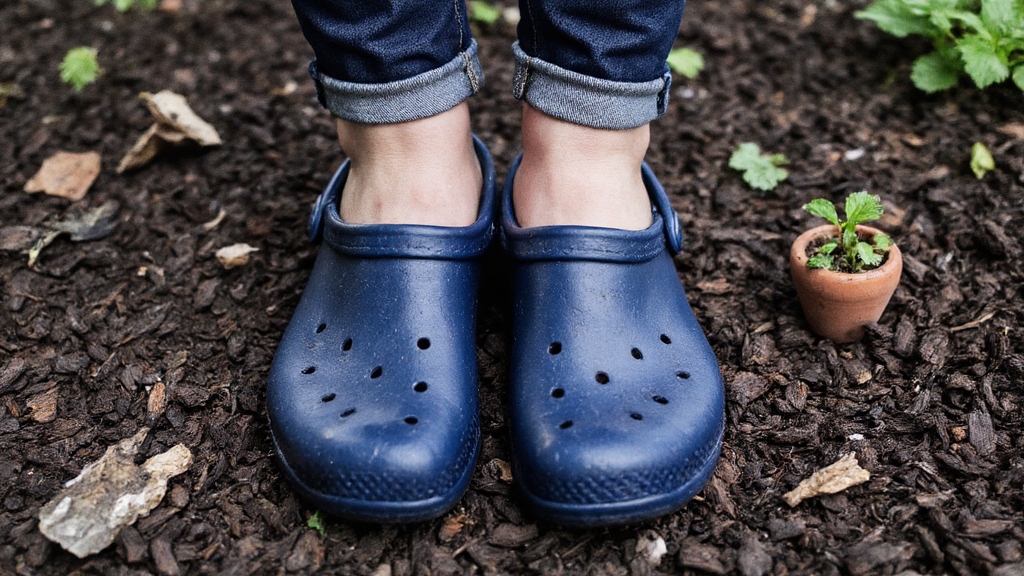
Finding the perfect fit for your gardening shoes requires three essential measurements, proper timing, and attention to your foot’s unique characteristics. You’ll get the most accurate results by measuring your feet at day’s end when they’re naturally swollen and largest.
Start by standing on paper with your full weight distributed evenly. Trace around each foot, then draw lines behind your heel and in front of your longest toe. Measure the distance between these lines for each foot. Consider investing in ergonomically designed gardening tools, like the Felco 6, to complement your gardening shoes for an overall comfortable experience.
| Measurement Step | Key Action |
|---|---|
| Timing | Measure at end of day |
| Position | Stand with full weight |
| Selection | Use longer foot measurement |
Always use your longer foot’s measurement when selecting sizes. Round up if you’re between sizes, and guarantee there’s a pinky finger-width gap behind your heel for maximum movement and comfort. Many gardening shoe manufacturers offer sizing chart videos to help you verify your measurements and ensure the most accurate fit possible.
Versatile Designs for Garden-to-Street Wear
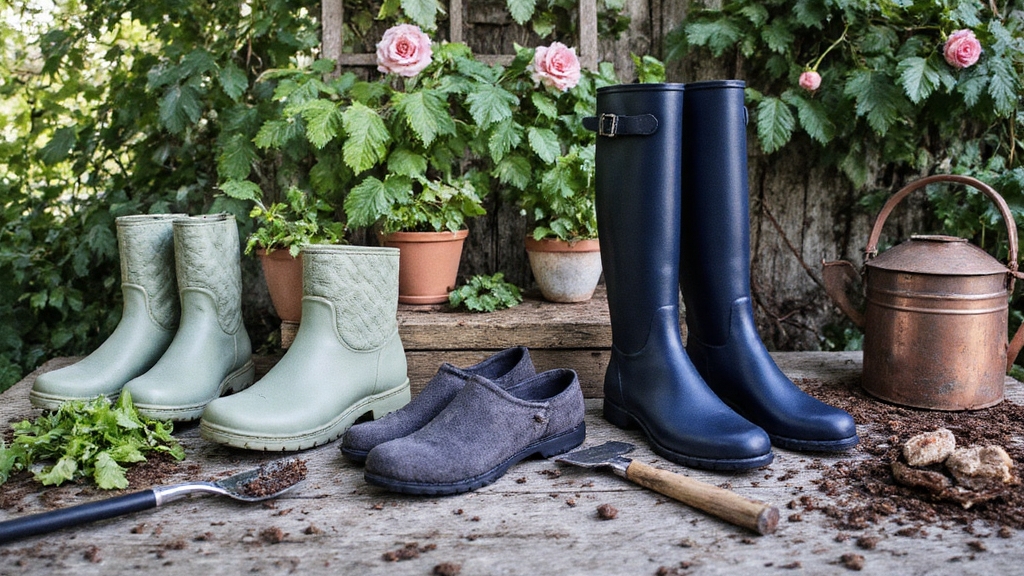
Today’s gardening shoes break traditional boundaries by offering designs that move seamlessly from muddy garden beds to casual street settings. You’ll find lightweight polymer foam and rubber materials that combine durability with fashionable appeal, making them perfect for running errands after gardening.
Modern gardening footwear seamlessly transitions from outdoor work to everyday wear, blending practical functionality with contemporary street-ready style.
Modern garden-to-street shoes feature these key design elements:
- Slip-on construction with wide openings for quick shifts between activities
- Easy-clean materials like rubber and neoprene that maintain their appearance after hosing off dirt
- Stylish profiles including ballet flat designs with florals or neutral tones that complement casual outfits
- Eco-friendly materials such as hemp and recycled plastics that align with sustainable fashion trends
These versatile designs reflect the growing trend toward natural living aesthetics, making garden clogs acceptable streetwear in urban environments while providing the functionality you need outdoors. Fashion-conscious individuals are increasingly drawn to these practical shoes as they allow them to connect with nature while maintaining their style sensibility. For more effective gardening, consider complementing your footwear with specialized tools like the Nisaku Hori-Hori Tomita Weeding Knife, which enhances the overall gardening experience.
Frequently Asked Questions
How Long Do Quality Women’s Gardening Shoes Typically Last With Regular Use?
Quality women’s gardening shoes typically last 1 to 3 years with regular use. You’ll get longer life from shoes made with tough rubber, durable polyurethane, and waterproof construction.
Heavy daily gardening reduces lifespan, while casual use extends it. USA-made shoes with premium materials often reach the upper 2-3 year range.
Your shoes’ durability depends on material quality, usage intensity, and proper maintenance practices.
Can Gardening Shoes Be Worn for Other Outdoor Activities Like Hiking?
You can wear many gardening shoes for hiking, but choose carefully. Ankle boots with waterproof materials, cushioned insoles, and slip-resistant soles work best for trails.
Avoid clogs or lightweight slip-ons since they lack ankle support and durability. Look for gardening shoes with flexible soles, strong grip, and breathable materials. However, thick rubber boots might overheat during strenuous hikes in warm weather.
Are There Vegan or Eco-Friendly Options Available for Women’s Gardening Footwear?
You’ll find plenty of vegan gardening shoes made from synthetic materials, plant-based leather alternatives, and recycled plastics. These eco-friendly options include waterproof clogs, boots, and sandals designed specifically for outdoor work.
Many brands use sustainable materials like organic cotton, grape leather, and wooden components. Prices typically range from £40-£120, with handcrafted options available on marketplaces like Etsy for unique, cruelty-free choices.
What’s the Price Range for Good Quality Women’s Gardening Shoes?
You’ll find good quality women’s gardening shoes range from $30 to $75 for most needs. Budget options start around $25-$40, offering basic waterproofing and comfort.
Mid-range shoes ($40-$50) provide better cushioning, breathable materials, and durability. Premium options ($75-$150) include advanced features like eco-friendly materials, superior waterproofing, and specialized technologies.
For casual gardening, you’ll get excellent value in the $30-$50 range with reliable comfort and protection.
Do Gardening Shoes Require a Break-In Period Before Becoming Comfortable?
Most quality gardening shoes don’t require a break-in period, especially those made with flexible materials like mesh or soft insoles. You’ll find slip-on styles and waterproof designs offer immediate comfort.
However, shoes with stiffer soles, wider widths, or extra support features might need short adjustment time. Choose shoes with “all-day comfort” technology and breathable linings for instant wearability, or start with shorter sessions if break-in’s needed.
Conclusion
You’ve got the knowledge to select gardening shoes that’ll keep your feet comfortable, dry, and protected while you work. Consider your garden’s terrain, weather patterns, and how long you’ll be outside. Don’t forget about proper sizing, ankle support needs, and easy-clean features. Whether you choose waterproof boots or breathable clogs, you’ll find options that work from garden beds to garden centers. Your feet will thank you for the upgrade.

